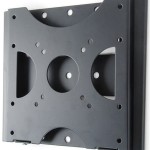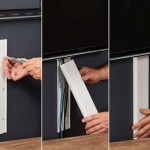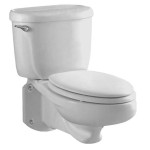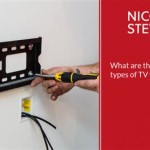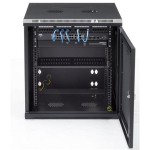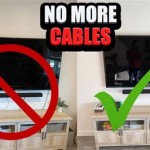Mounting a TV Flat Against the Wall: A Comprehensive Guide
Mounting a television flush against the wall offers a sleek, modern aesthetic while maximizing space in a room. This method of installation not only enhances the viewing experience by placing the screen at an optimal height but also minimizes clutter by concealing unsightly cables and the television's original stand. However, a successful flush-mount installation requires careful planning, the right tools, and a thorough understanding of the process. This article provides a detailed guide to mounting a TV flat against the wall, covering essential considerations, necessary tools, step-by-step instructions, and potential challenges.
Key Point 1: Preparation and Assessment
Before initiating the mounting process, a thorough assessment of several factors is crucial. This initial phase dictates the success and longevity of the installation. The first consideration is the television's weight and size. This information is typically found in the television's user manual or on a sticker located on the back of the unit. Understanding these specifications is essential for selecting a TV mount that can safely support the television. Exceeding the weight limit of the mount can result in a catastrophic failure, potentially damaging the television and the wall.
Next, the type of wall must be identified. Walls are generally constructed of drywall (also known as sheetrock), plaster, brick, or concrete. Drywall walls require that the mount be securely anchored to wall studs, the vertical framing members within the wall. These studs provide the necessary structural support to hold the weight of the television. Brick and concrete walls offer inherently stronger support and can often accommodate heavier televisions with the appropriate anchors. Plaster walls can be more challenging as they are often brittle and may require specialized anchors and techniques. It is important to use a stud finder to accurately locate the wall studs. Stud finders utilize either magnetic or electronic sensors to detect the presence of studs behind the wall surface. Electronic stud finders are generally more accurate and can detect the edges of the studs, providing a more precise location.
The desired viewing height and angle should also be considered. The optimal viewing height is typically determined by the viewer's eye level when seated. Ideally, the center of the television screen should be at or slightly below eye level. This minimizes neck strain and provides a more comfortable viewing experience. The viewing angle is also important, especially in larger rooms. A mount with tilting capabilities allows for adjusting the viewing angle to minimize glare and optimize the image quality from different positions in the room. Furthermore, the location of electrical outlets and cable connections should be taken into account. If these connections are not conveniently located near the desired mounting position, it may be necessary to install new outlets or run cables through the wall. This often requires the services of a qualified electrician to ensure compliance with local electrical codes.
Finally, the type of TV mount must be selected. There are several types of TV mounts available, including flat mounts, tilting mounts, and full-motion mounts. Flat mounts, also known as low-profile mounts, hold the television very close to the wall, typically less than an inch. This provides the most flush appearance but offers limited adjustability. Tilting mounts allow the television to be tilted up or down, reducing glare and improving the viewing angle. Full-motion mounts offer the greatest flexibility, allowing the television to be swiveled left or right and extended away from the wall. The choice of mount depends on the specific needs and preferences of the user.
Key Point 2: Tools and Materials
Having the right tools and materials is essential for a smooth and successful TV mounting project. The following is a comprehensive list of items that are typically required:
- TV Mount: As described above, selecting the appropriate mount is critical. Ensure that the mount is compatible with the television's VESA (Video Electronics Standards Association) mounting pattern, a standardized pattern of screw holes on the back of the television.
- Stud Finder: A stud finder is used to locate the wall studs behind the drywall.
- Level: A level is used to ensure that the mount is installed perfectly horizontally.
- Drill: A drill is needed to create pilot holes for the mounting screws and to install wall anchors if necessary.
- Drill Bits: A variety of drill bits are needed for different materials, such as wood (for studs), concrete, or brick.
- Screwdriver: A screwdriver is used to tighten the mounting screws.
- Socket Wrench: A socket wrench may be required for tightening larger bolts used with some mounts.
- Pencil: A pencil is used to mark the location of the studs and the mounting holes.
- Measuring Tape: A measuring tape is used to determine the desired viewing height and to locate the center of the wall.
- Safety Glasses: Safety glasses are essential to protect the eyes from dust and debris.
- Gloves: Gloves can provide a better grip and protect the hands from injury.
- Wire Strippers/Crimpers: If running cables through the wall, wire strippers and crimpers may be needed to terminate the cables.
- Fish Tape: Fish tape is used to pull cables through the wall.
- Cable Ties: Cable ties are used to organize and manage the cables behind the television.
- Wall Anchors: Wall anchors are used to provide additional support for the mount, especially if the mount cannot be directly attached to wall studs.
It is highly recommended to gather all the necessary tools and materials before beginning the project. This will minimize interruptions and ensure that the project can be completed efficiently.
Key Point 3: Step-by-Step Installation Process
The following is a detailed step-by-step guide to mounting a TV flat against the wall. It is crucial to carefully follow these instructions to ensure a safe and secure installation.
- Locate the Wall Studs: Use a stud finder to locate the wall studs behind the drywall. Mark the location of the studs with a pencil. It is important to verify the accuracy of the stud finder by driving a small nail into the wall at the marked locations. If the nail hits solid wood, then the stud has been located.
- Attach the Mounting Brackets to the TV: Attach the mounting brackets to the back of the television using the screws that are included with the TV mount. Ensure that the brackets are securely attached to the television using the correct size screws. Refer to the television's user manual for the correct screw size and torque settings.
- Position the Wall Mount: Position the wall mount on the wall at the desired location. Use a level to ensure that the mount is perfectly horizontal. Mark the location of the mounting holes on the wall with a pencil.
- Drill Pilot Holes: Drill pilot holes into the wall at the marked locations. If attaching the mount to wall studs, drill the pilot holes directly into the center of the studs. If attaching the mount to drywall only, use appropriate wall anchors and follow the manufacturer's instructions for installing the anchors.
- Attach the Wall Mount to the Wall: Attach the wall mount to the wall using the screws that are included with the TV mount. Ensure that the mount is securely attached to the wall. If using wall anchors, make sure that the anchors are properly set before tightening the screws.
- Hang the TV on the Wall Mount: Carefully lift the television and hang it on the wall mount. Ensure that the mounting brackets on the television are properly aligned with the hooks or slots on the wall mount.
- Secure the TV to the Wall Mount: Secure the television to the wall mount using the locking mechanisms provided with the mount. This may involve tightening screws or engaging latches.
- Connect the Cables: Connect the necessary cables to the television, such as the power cord, HDMI cables, and coaxial cables.
- Organize the Cables: Organize the cables behind the television using cable ties or cable sleeves. This will help to keep the cables neat and tidy and prevent them from being tangled. Running cables inside the wall cavity behind the TV is an option for a cleaner look but may require professional installation.
- Test the Installation: Turn on the television and test the installation to ensure that everything is working properly. Adjust the viewing angle as necessary to optimize the viewing experience.
Throughout the installation process, it is crucial to prioritize safety. When drilling into walls, be mindful of potential hazards such as electrical wiring and plumbing. If uncertain about the location of these utilities, it is advisable to consult with a qualified professional before proceeding. Furthermore, when lifting the television, especially larger models, it is recommended to have assistance to prevent accidental drops or injuries.
Mounting a TV flush against the wall is a project that can significantly enhance the aesthetics of a room and improve the viewing experience. By carefully planning the installation, using the right tools and materials, and following the step-by-step instructions outlined above, it is possible to achieve a professional-looking result. Remember to always prioritize safety and consult with a qualified professional if any doubts or concerns arise during the process. A properly mounted television not only looks great but also ensures the safety and longevity of the equipment.

Unts Extra Large Flat Low Profile Tv Wall Mount For 50 In 92 Tvs Ff84

How To Mount A Flat Screen Tv On Wall The Home

Unts Universal Fixed Small Durable Ultra Slim Flat Tilt Tv Wall Mount For 13 47 In Vesa 75x75 To 200x200 Locking Brackets Ff22 The Home

Have A Question About Proht Low Profile Tilting Tv Wall Mount For 37 In 70 Flat Panel Tvs With 8 Degree Tilt 77 Lb Load Capacity Pg 4 The Home

Slim Fit Wall Mount 2024 Flush Tv With Samsung Us

How To Mount A Flat Screen Tv On Wall The Home

Standard Flat Wall Mount

Articulating Flat Screen Tv Wall Mount Bracket Home Theater Installation Plasma Mounting Service In San Diego

Unts Extra Large Flat Low Profile Tv Wall Mount For 50 In 92 Tvs Ff84

How High Should A Tv Be Mounted And What Is The Ideal Viewing Distance Cepro


